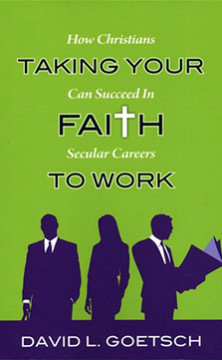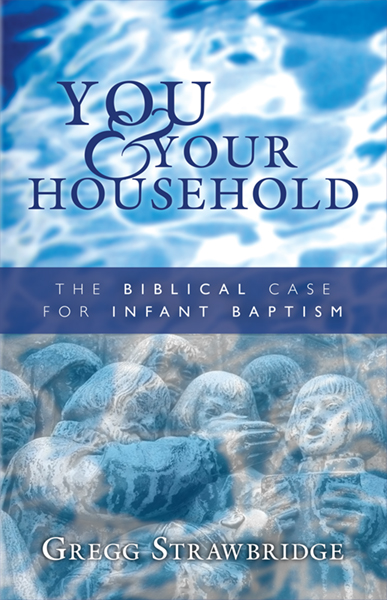
Nearly 70 years ago, Rev. Lesslie Newbigin was chosen to lead a new “united” Church in India composed of Anglican, Methodist, and Reformed congregations. This ecumenical endeavor became the Church of South India (CSI) and is now the second largest church in India, serving four million members throughout Southeast Asia. Few modern efforts in the field of missiology compare to Newbigin’s success.
 The Local-Missional Church
The Local-Missional Church
Attempting to escape the barriers of his Western distinctives, Newbigin began translating the gospel into a vernacular that non-Christians could grasp. His missionary endeavors literally began with efforts in translating as he learned the Tamil language and recognized that, in the mission field, one first needed to build a common “currency” of communication. Newbigin advocated a type of contextualization of the Christian witness where Churches are immersed in the language and culture of the local people. As Newbigin attempted to retire, he returned home to England, which was now markedly non-Christian. There he continued his work by urging Christians in the west that, to survive, they must adopt a missional view of the Church.
[hr border_width=”1″ ]
“It is the church which lives on the frontier that will be ready to advance in strength.” – Lesslie Newbigin
tweet this quote
[hr border_width=”1″ ]
Newbigin for the Missional Church
In Northern California, Reformed Church in America minister turned Anglican priest Fr. Joshua Lickter embraces both Newbigin’s missional worldview and his love for the people of India.
Instead of the rural villages of Tamil Nadu or Madras, however, Fr. Lickter spends his time in Roseville, CA, with skeptics and those disenfranchised from Church. Like Newbigin, Fr. Lickter recognized that his community is largely outside of a Church context or has intentionally left the Church.
 “Our goal has always been to be a safe place for people from various spiritual backgrounds and traditions to ask hard questions without fear of being judged,” says Fr. Lickter. “Thirty-nine percent of the total population of the greater Roseville area consider themselves ‘de-churched,’ and this has proven an excellent environment for some of them to work through their spiritual issues.”
“Our goal has always been to be a safe place for people from various spiritual backgrounds and traditions to ask hard questions without fear of being judged,” says Fr. Lickter. “Thirty-nine percent of the total population of the greater Roseville area consider themselves ‘de-churched,’ and this has proven an excellent environment for some of them to work through their spiritual issues.”
In the same way, the nuts and bolts of Newbigin’s model have always been at the local community level, as he said: “It is surely a fact of inexhaustible significance that what our Lord left behind Him was not a book, nor a creed, nor a system of thought, nor a rule of life, but a visible community. He committed the entire work of salvation to that community.”
Early in 2015, members of Fr. Lickter’s Roseville congregation asked the Church to pray special intentions for the people of India after two Northern Californian Sikhs were arrested during a trip to Punjab, India. The father and son were held as political prisoners and reports surfaced that they were being tortured by the Indian government. Bapu Surat Singh Khalsa had recently begun a hunger-strike and was now being force fed while his son Ravinder languished in squalor at a nearby jail.
Fr. Lickter joined leaders in Northern California’s Sikh community to host a town hall meeting with Congressman Tom McClintock at the Roseville Sikh Gurdwara and discussed the situation. At the meeting he met Bapu’s daughter who came to tears as Lickter told her that his church had been praying for her father. “I knew someone must’ve have praying,” she said. “Keep praying, please. Your prayers are working.”

Success in a Newbigin Community
Since then, Congressman McClintock joined with five other Californian congressional representatives to demand “the Indian government abide by its international human rights commitments… and ensure that these rights are safeguarded for political prisoners and all citizens in India.” His son was released and Bapu Surat Singh Khalsa was released from force-feeding at the government hospital.
“I am often asked by people, why would you, as a Christian congregation, regularly pray for a Sikh man and his plight in India.” Fr. Lickter explains, “The image of God, in many people, is being oppressed in India. It doesn’t matter if they’re Sikh, or if they’re Christian, or if they’re Muslim, or if they’re Buddhist. It doesn’t matter what their background is — they are being oppressed because they believe differently.”
Responding to reports that hunger-striking Khalsa is in failing health and once again detained by Indian authorities (who want to end his political protest), the Anglican priest took his prayers, with the help of US-based human rights group Organization for Minorities of India, from inside his church to social media through videos on Youtube and Facebook. Khalsa, who lives in Lathrop, CA, is on a hunger-strike to protest for political prisoners in India who have completed their sentences but are not being released.

See the video here
Social Justice in a Newbigin Style Mission
“We believe that what affects one community in India affects us all,” says Fr. Lickter, priest at Incarnation Anglican Church. “All of humanity shares the image of God and Christians need to take it seriously when individuals bearing his image are oppressed anywhere.” In prayers for the 83-year-old American Sikh, he asked that God’s “hand would be upon him as he stands against the oppression that he sees in India right now.”
Fr. Lickter sees similarities between the plights of Indian Christians and Sikh political prisoners. He believes both often face the same caste discrimination and political persecution by the predominantly Hindu government. Last month, at a conference in Stockton, CA, he warned that minorities in India are “oppressed because the Indian government embraces a belief system that dehumanizes entire people groups.”
Home to nearly 60 million Christians, India’s religious nationalism is considered by various religious liberty advocates as the leading source of Christian persecution. Although anti-conversion laws criminalizing freedom of conversion encourage violence against religious minorities like Sikhs and Christians, Prime Minister Narendra Modi wants to nationally implement such legislation. Meanwhile, minorities are seeing their places of worship vandalized as their already impoverished communities are discriminatorily denied essential services like government food subsidies.
Standing behind his church’s altar, Fr. Lickter prayed: “Lord, we ask that you would be with Bapu, that you would strengthen him, as he hungers, as he allows his body to hunger because so many other people right now are hungering for justice.”
The witness of the Church of South India is strengthened as they strive to live Newbigin’s vision. The Church continues to grow, despite harsh persecution, because Christians there have embraced our Lord’s prayer for unity. Christ calls for his people to be one, just as He and the Father are one. (John 17:21) This picture of unity is nowhere more clear than in the work of Christians serving their communities as they recognize their oneness with others made in the image of God.
Father Joshua Lickter pastors Incarnation Anglican Church in Roseville and is part of the Diocese of Churches for the Sake of Others in the Anglican Church in North America.
Read more








 The Local-Missional Church
The Local-Missional Church “Our goal has always been to be a safe place for people from various spiritual backgrounds and traditions to ask hard questions without fear of being judged,” says Fr. Lickter. “Thirty-nine percent of the total population of the greater Roseville area consider themselves ‘de-churched,’ and this has proven an excellent environment for some of them to work through their spiritual issues.”
“Our goal has always been to be a safe place for people from various spiritual backgrounds and traditions to ask hard questions without fear of being judged,” says Fr. Lickter. “Thirty-nine percent of the total population of the greater Roseville area consider themselves ‘de-churched,’ and this has proven an excellent environment for some of them to work through their spiritual issues.”










 Writing in the period following the death of Julius Caesar (44 BC) and during a time of unrest and civil war, Virgil’s initial poetry longs again for peace. Recognizing that the power of the Caesar was not enough to provide a stable future, the poetry focuses on a greater motif of the goodness of creation and nature. Virgil’s agriculture poetry serves two purposes in that it remains relatable to their common life and points to the perfection of the original creation. In relating to his fellow Romans, Virgil’s pastorally lines about husbandry and agriculture remind us of those used a few decades later by the triumphalist born of a virgin who hailed from the town of Nazareth.
Writing in the period following the death of Julius Caesar (44 BC) and during a time of unrest and civil war, Virgil’s initial poetry longs again for peace. Recognizing that the power of the Caesar was not enough to provide a stable future, the poetry focuses on a greater motif of the goodness of creation and nature. Virgil’s agriculture poetry serves two purposes in that it remains relatable to their common life and points to the perfection of the original creation. In relating to his fellow Romans, Virgil’s pastorally lines about husbandry and agriculture remind us of those used a few decades later by the triumphalist born of a virgin who hailed from the town of Nazareth.























